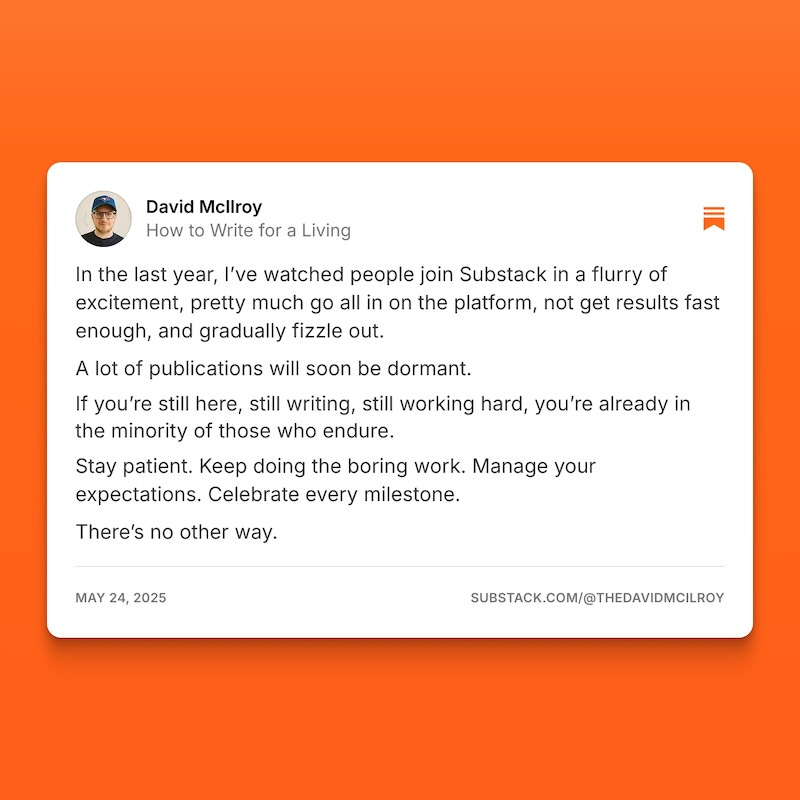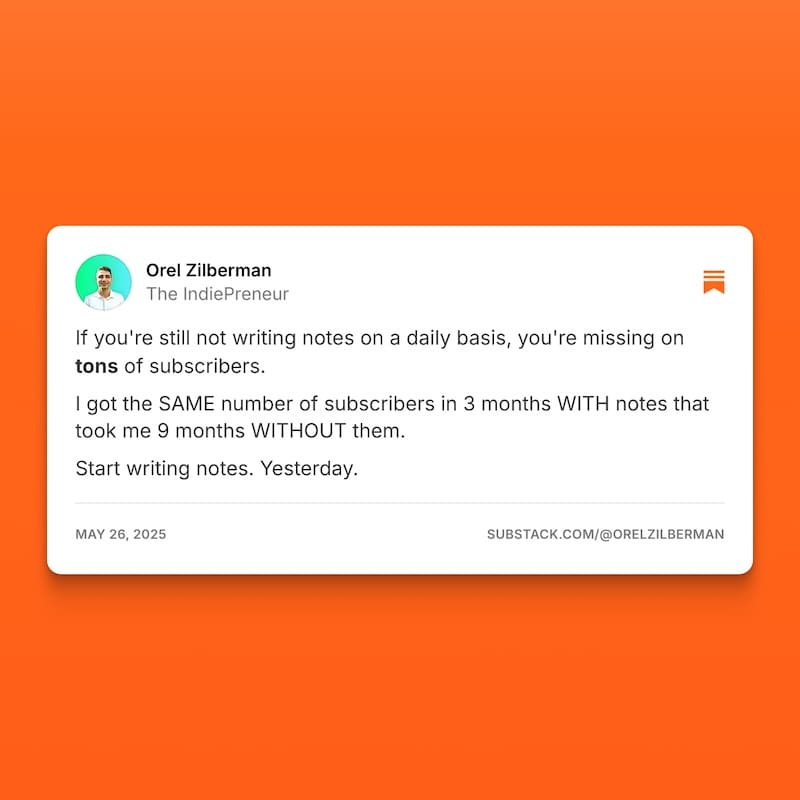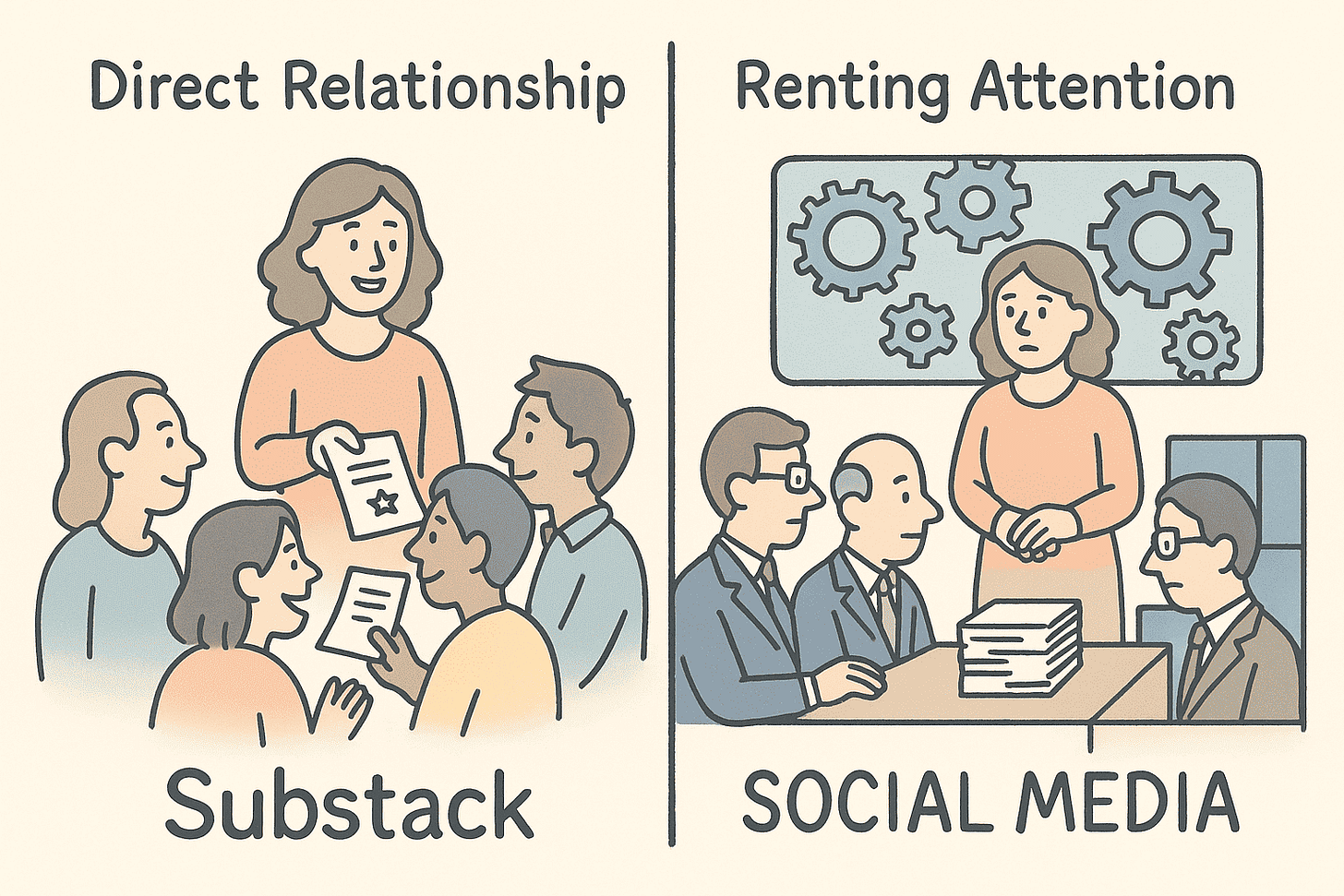How Substack Is Remarkably Changing The Game For Good
With over 5 million paid subscriptions, Substack has become the ultimate growth engine for writers. I'll explain why so many people turn to this platform instead of traditional social media.
What You’ll Learn
The explosive growth data behind Substack’s rise
Why traditional social media falls short—and Substack wins
The key product metrics every PM should track
The three predictable stages of newsletter growth
How you can start your Substack growth journey today
I've been watching something incredible happen in the content creator economy. While most social platforms are busy optimizing for short attention spans and algorithmic chaos, one platform has been quietly building something different, and the results are now impossible to ignore.
Substack has officially surpassed 5 million paid subscriptions. Not just followers or likes or empty engagement metrics. Real people paying real money for content they genuinely value.
Substack Is What Happens When Community Is Done Right
This isn't just another tech milestone. It represents a fundamental shift in how content creators can build sustainable careers and meaningful connections with their audiences. Let’s see more about it through product lens. 👓
The Explosive Growth Of Substack In Numbers
Let's look at what's actually happening with Substack's growth trajectory:
🚀 Substack now has over 5 million paid subscriptions, up from 4 million just four months ago, and 3 million a year before that.
🚀 The platform hosts more than 35 million active subscriptions in total (including free subscribers)
🚀 More than 50,000 publishers are now generating income through the platform
🚀 The top 10 publishers collectively earn over $40 million annually
💡 Substack told The Wall Street Journal this week that the top ten accounts on the platform alone collectively earn $40m a year.
What's especially fascinating is the acceleration. Substack exponential growth is adding nearly 1 million new paid subscriptions every quarter now.
And remember, these aren't vanity metrics like views or impressions. These are actual people opening their wallets because they find genuine value in what creators are offering.
Why Substack Works When Traditional Social Media Doesn't
I think we all know that traditional social platforms have become increasingly hostile environments for thoughtful content. Think about it:
❌ Algorithmic uncertainty: You never know if your carefully crafted post will reach 5 people or 5,000.
❌ Toxic engagement: The platforms reward controversy and outrage rather than depth and quality.
❌ Constant pivots: Just when you think you understand how to succeed on a platform, they change the rules.
❌ Zero ownership: You build an audience but have no direct relationship with them.
On the other hand, Substack has taken a completely different approach. Here's why I think it's working:
✅ Direct relationship with audience: Writers own their email lists and have a direct line to readers.
✅ No algorithm to please: Your content goes directly to subscribers inbox.
✅ Monetization built-in: The platform makes it easy for readers to support writers they value.
✅ Multi-format flexibility: 82% of top creators now use audio and video alongside written content.
Key Product Metrics Every PM Should Track
Activation & Retention
65% of new readers open their first paid issue within 30 days
72% of paid subscribers retained at 90 days (niche-focused newsletters see +15% lift)
Only 8% actively churn before auto-renewal
Monetization & ARPU
Median subscription price: $10/mo → ARPU $80/yr
Top 250 publishers using audio/video see 2.5× the revenue of text-only writers
Feature Adoption Insights
Audio & Video Integration: By Feb 2025, 82% of the top 250 earners publish audio/video (up from 50% Apr 2024).
Notes Engagement: Smaller creators acquire 60% of new free subscribers via Notes recommendations.
A/B Testing: Since May 2025 launch, 1,200+ newsletters have run subject-line tests, boosting open rates by 12% on average.
Top content creators like
receive early access to features like this. If you want to know more about A/B testing here’s a sneak peak.
Insights On User Personas & Segmentation
Aspiring Solopreneurs: 1st-time writers; first-year paid subs: 10–50
Niche Experts: Industry pros converting existing followings; ARPU: $12/mo
Established Journalists: Legacy media refugees; 91% retention at 90 days
Multimedia Creators: Podcasters/video hosts; 150% higher cross-newsletter conversions
Understanding Substack's Three Growth Stages
What I find particularly interesting is that successful Substack writers typically follow a predictable growth pattern. Based on research from multiple writers, there are three distinct stages of growth on the platform:
Stage 1: The Foundation (6-12 months)
During this phase, writers typically gain 0-3 new subscribers per day and have 0-5 paid subscribers. It's about finding your voice and establishing your content rhythm.
This is when most people give up. But don't give up!
I’d like to quote
here:Stage 2: The Acceleration (Next 3-6 months)
Growth picks up to 4-10 new subscribers daily with 0-10 paid subscribers. Your content is resonating and word is spreading.
Why shorter? Momentum compounds—what took you up to a dozen paid subs can double or triple in half the time.
Stage 3: The Hockey Stick
This is what everyone dreams of - exponential growth in both free and paid subscribers. This is when writing becomes a viable income source.
The key insight here? The second stage takes half as long as the first. Momentum builds on itself, which is why perseverance through stage one is so critical.
Of course, every writer’s journey is unique: some hit acceleration after 4 months, others need 10. The key takeaway is that Stage 2 usually takes roughly half as long as Stage 1, and only by powering through the initial hurdles will you unlock that hockey-stick phase.
And once you are ready to generate money from it, map your paid-subscriber journey as retention funnel:
Exposure via Recommendations/Notes
Free signup email capture
Welcome sequence activation (open rate: 65%)
Free-to-paid conversion (avg. 5%)
30-day retention (65%) → 6-month retention (50%) → 1-year retention (35%)
💡 Tracking each funnel stage with cohort analysis (e.g., by signup month, referral source or content type) reveals drop-off points and informs targeted re-engagement campaigns.
To understand the Substack’s model I like how
simplifies it:When a large platform adds a feature, it stays buried under everything else the platform does.
But when a dedicated product focuses entirely on one thing—and does it exceptionally—it rises above.
You can read more about the "Inverted Iceberg" Mental Model here.
How To Start Your Substack Growth Journey
Is It Too Late To Start? Absolutely Not
I often hear people ask: "Has the Substack opportunity passed? Is it too late to start?"
The data emphatically says no.
The platform is still in its growth phase, with the subscriber base expanding faster than ever. In fact, Substack is still far from its reported internal goal of reaching 40 million subscriptions.
If you're convinced and ready to start your own newsletter, here's a simplified roadmap:
Find your specific angle
Don't try to be everything to everyone. The most successful newsletters have a clear, defined focus.
Commit to consistency
Remember the growth stages - success typically requires at least 6-12 months of consistent publishing.
Start with value, not monetization
Focus on providing genuine value before asking readers to pay.
Leverage existing audiences
If you have followers on other platforms, create a clear migration strategy to bring them to your newsletter.
Engage with the Substack ecosystem
Use Substack Notes, participate in discussions, and connect with other writers on the platform.
“When Notes first launched, I dismissed it as "Substack's version of Twitter" - a distraction from my real work of writing newsletters.
Six months and 6,000+ new subscribers later, I realize that was a rookie mistake.”
-
This was my mistake too! 🥲
“Notes isn't just a social feature - it's the most efficient subscriber acquisition channel on the entire platform when used correctly. While a great newsletter post might bring in 20-30 new subscribers, a strategic Note can do the same with 1/10th the effort.”
-
From Wes testing results:
Regular Participation: Posting 2-3 times daily with simple content is more effective than occasionally posting a perfect Note.
Value First: Highest-performing Notes provide insights, tips, or observations instead of promotional content about newsletters.
Community Building: Inviting people to introduce themselves or collaborate in Notes fosters community and attracts new subscribers.
Authentic Engagement: Notes that encouraged thoughtful comment discussions generated more subscribers than those with just high likes.
Read Wes article for more Substack tips and tricks. 👌
Citing from the IndiePreneur.
The Power Of Ownership Versus Renting Attention
One final point I want to emphasize is perhaps the most important difference between Substack and traditional social media:
On social media, you're renting attention. On Substack, you're building an asset.
When you build a following on Twitter/X, Instagram, TikTok or LinkedIn, you're essentially building on rented land. The platform can change the rules at any moment, and your reach depends entirely on their algorithms.
With Substack, you own the direct relationship with your audience. Your subscriber list is yours. If you ever decided to leave the platform, you can take your audience with you.
This isn't just a theoretical benefit, it creates practical value. Just look at the case of
, he managed to migrate his LinkedIn user base successfully.Migrating 3,700 LinkedIn Followers to Paid Subscribers
Strategy: A three-phase rollout—Content Teaser → Soft Launch with exclusive preview → Direct migration campaign via personal messages and email drips.
Results: 3,700 LinkedIn followers converted to paid Substack subscribers in 6 months, with 91% retention at 90 days and $5K+/mo revenue at $10/subscriber.
Key Tactics: Personalized outreach, value-first content upgrades, limited-time founding-member pricing, and leveraging existing community trust.
Final Thoughts
The Substack revolution isn't just about numbers:
It's about creating a sustainable economy for thoughtful content in an age of distraction.
While much of the internet has optimized for engagement at any cost, Substack has built a model where quality content can find its audience and be properly valued.
Whether you're an established writer looking for more independence or someone who's never written publicly before, there's never been a better time to start building your own audience on Substack.
I don't think we've even seen the real Substack boom yet. At 5 million paid subscriptions and growing exponentially, we're still in the early chapters of this story.
What do you think? Are you considering starting a Substack or already running one? What has your experience been like? Drop your thoughts in the comments! 👇








Always great read, thank you for mentioning 🙏
I’m in the foundation phase. This platform has been unlike any other, here community is everything.